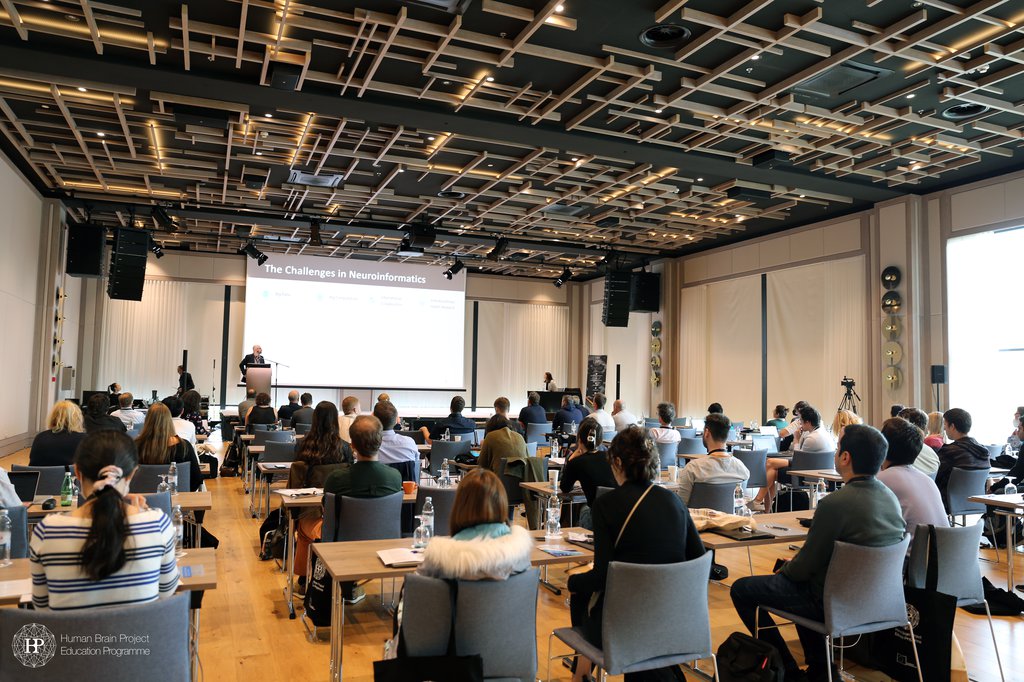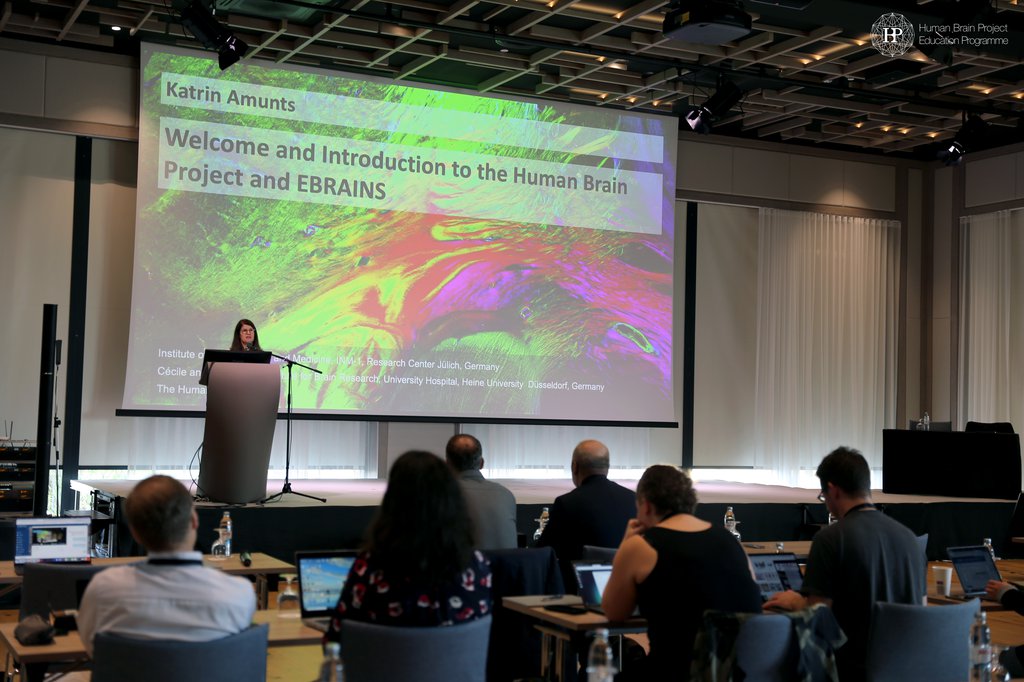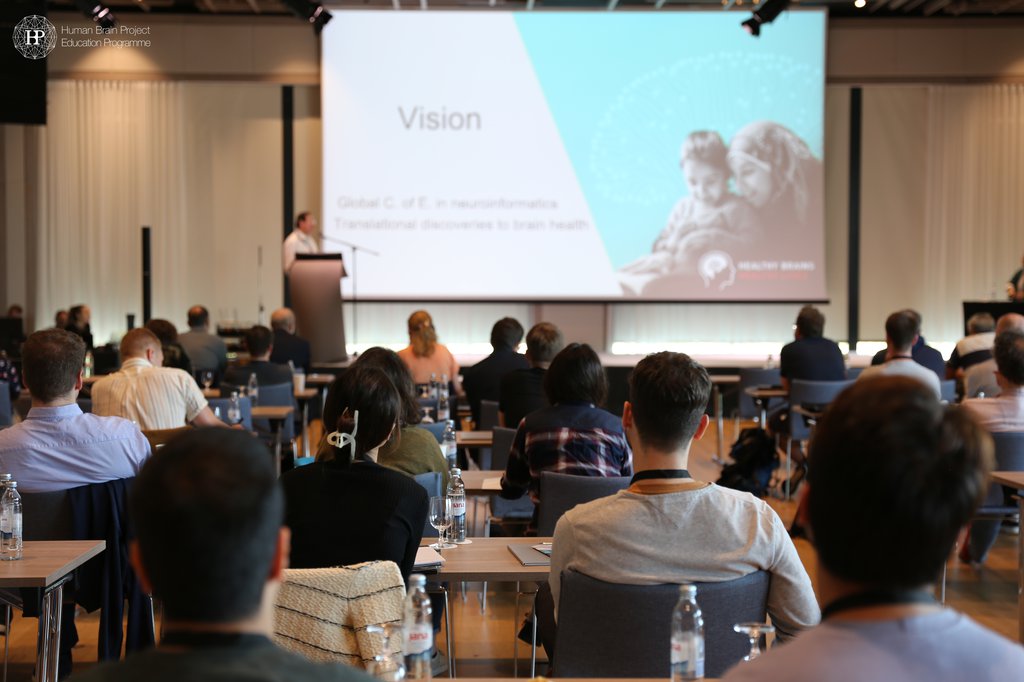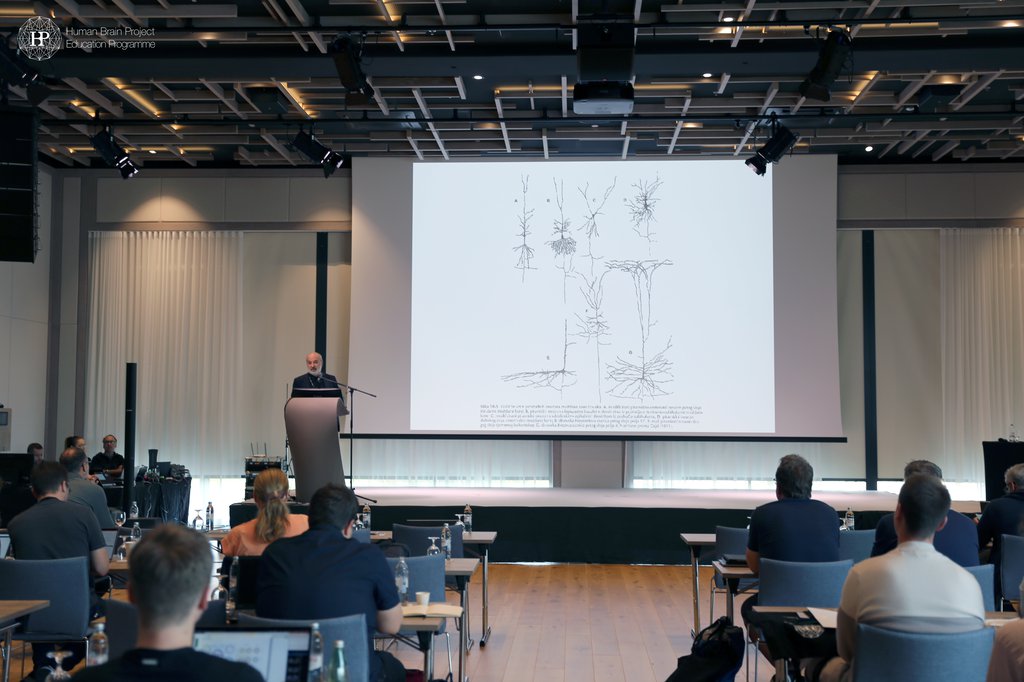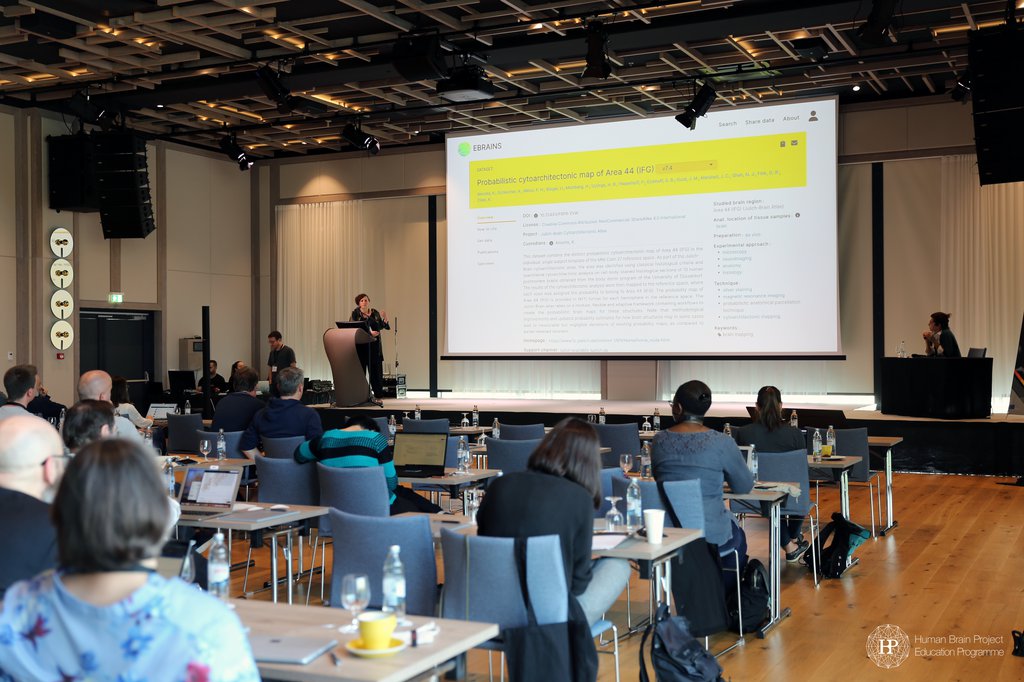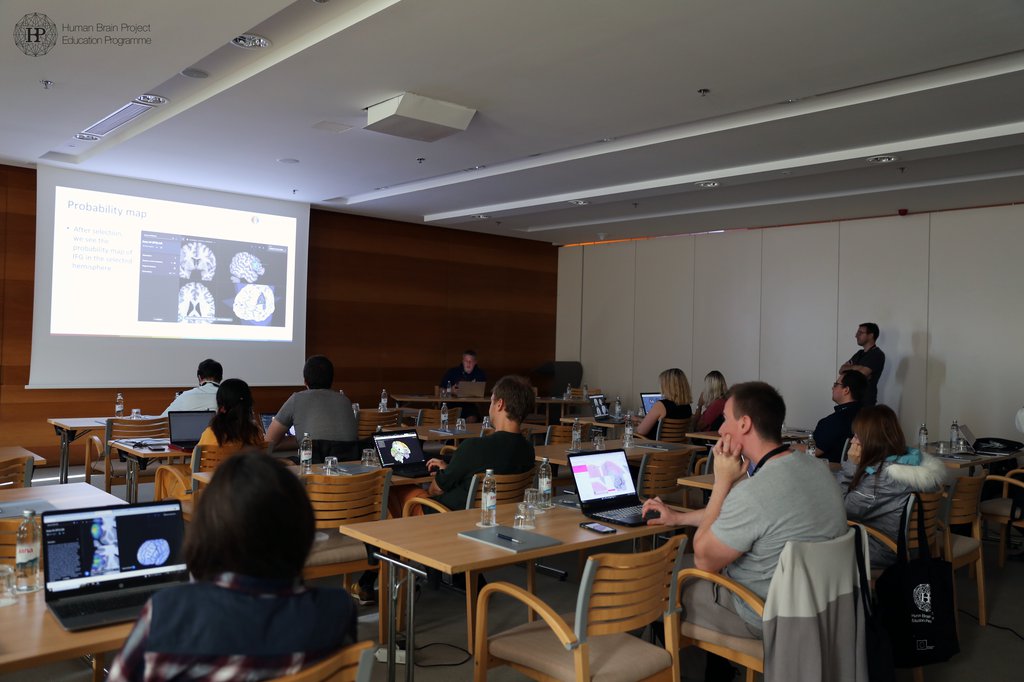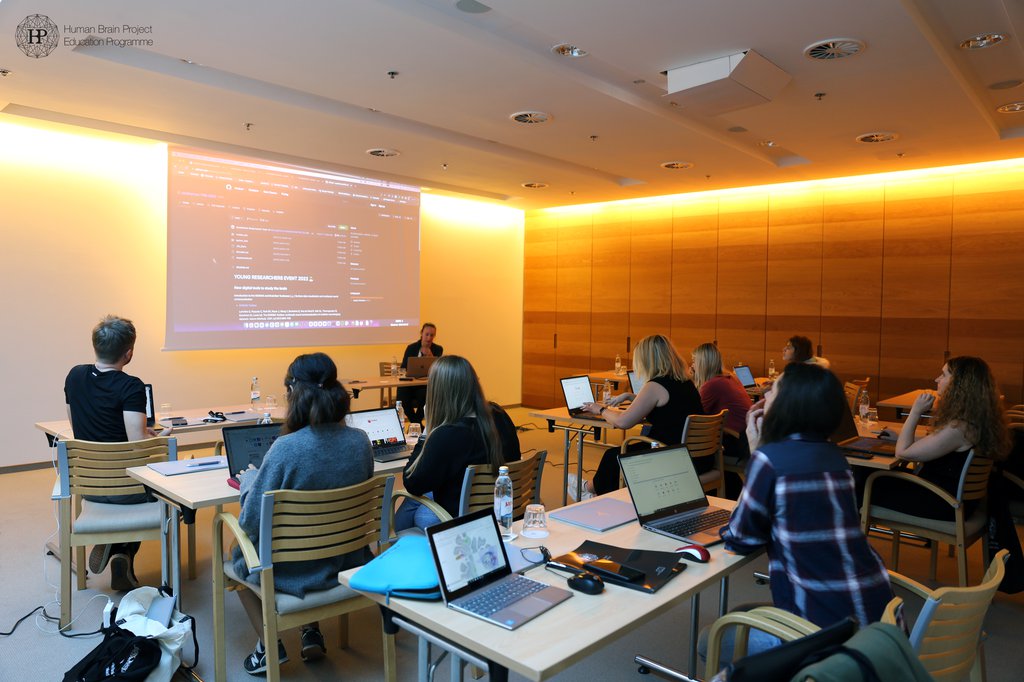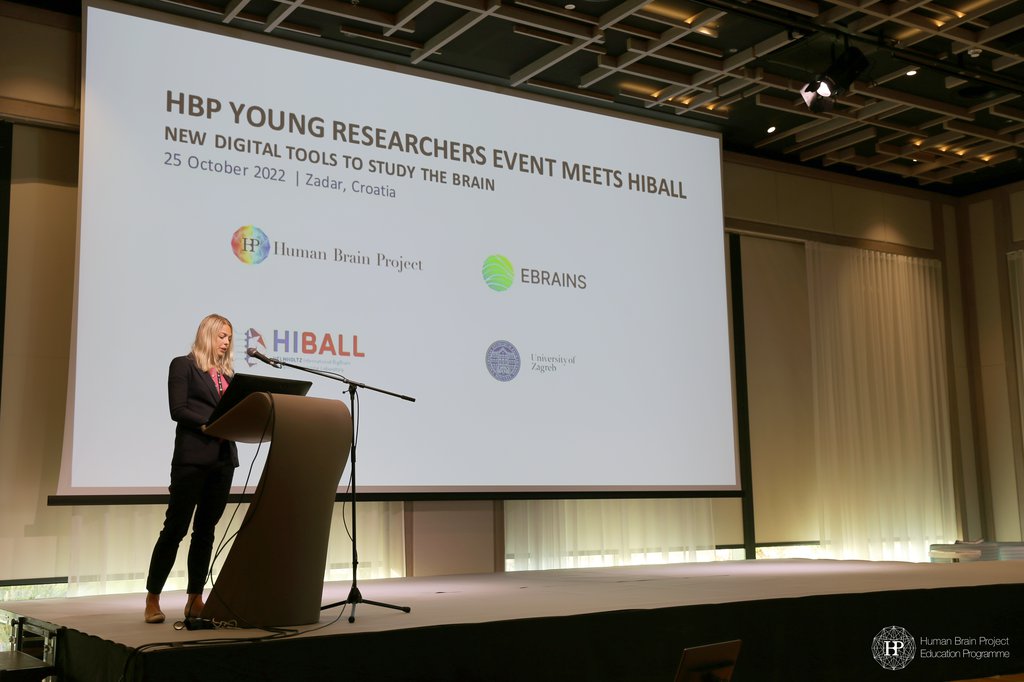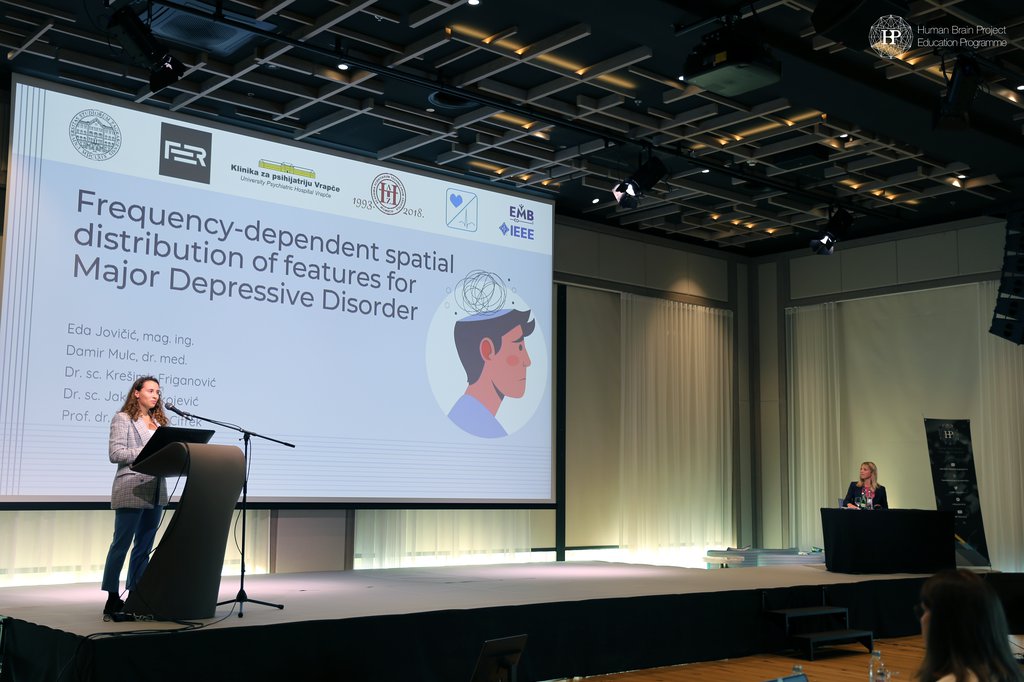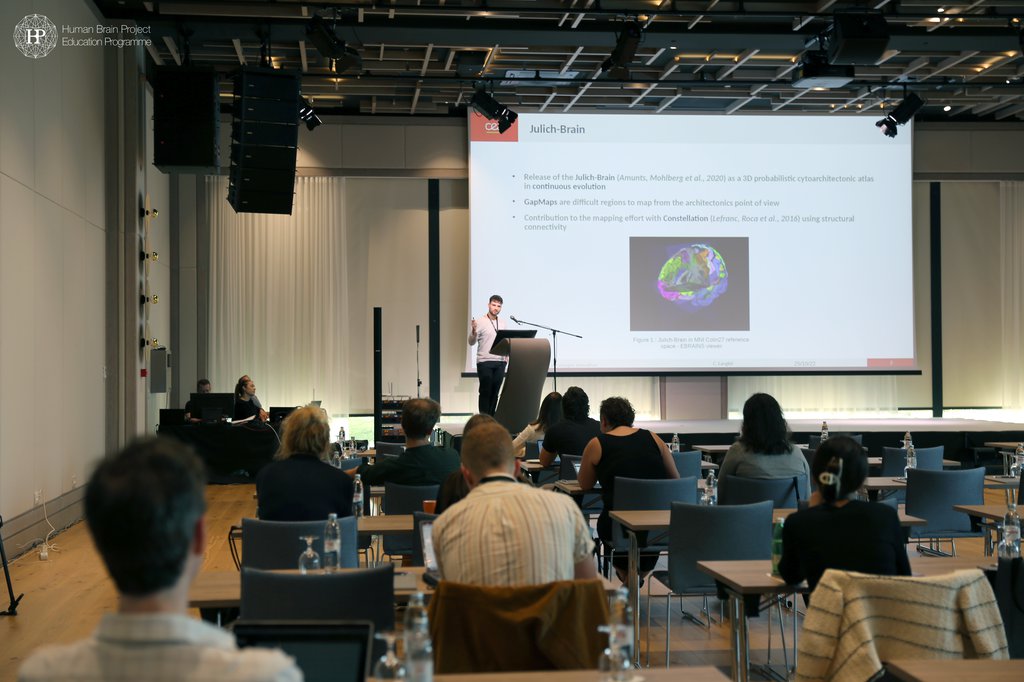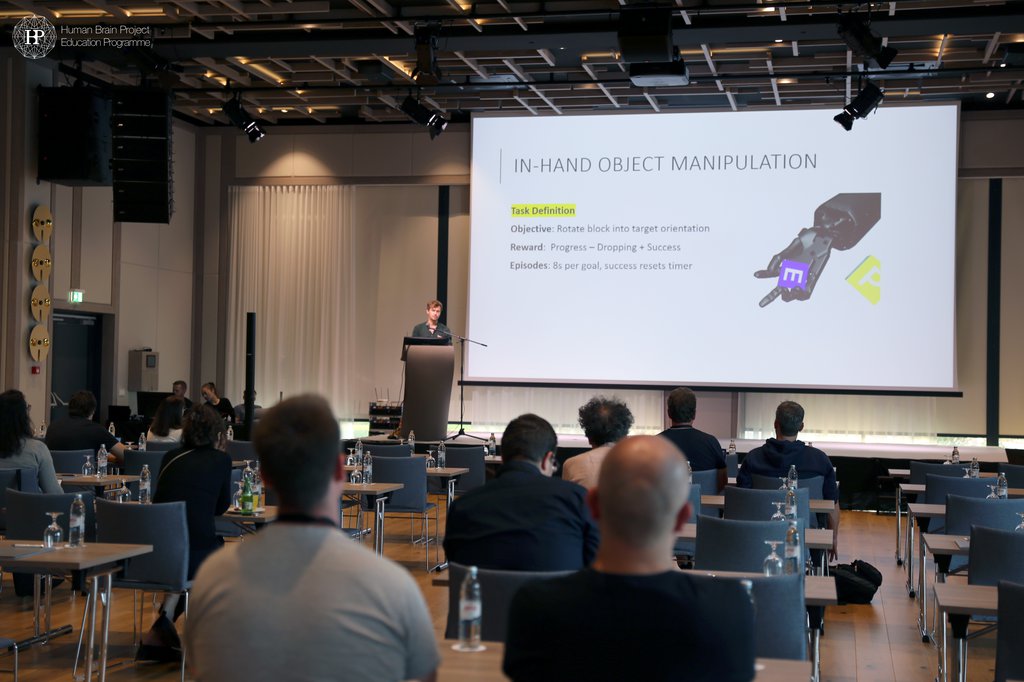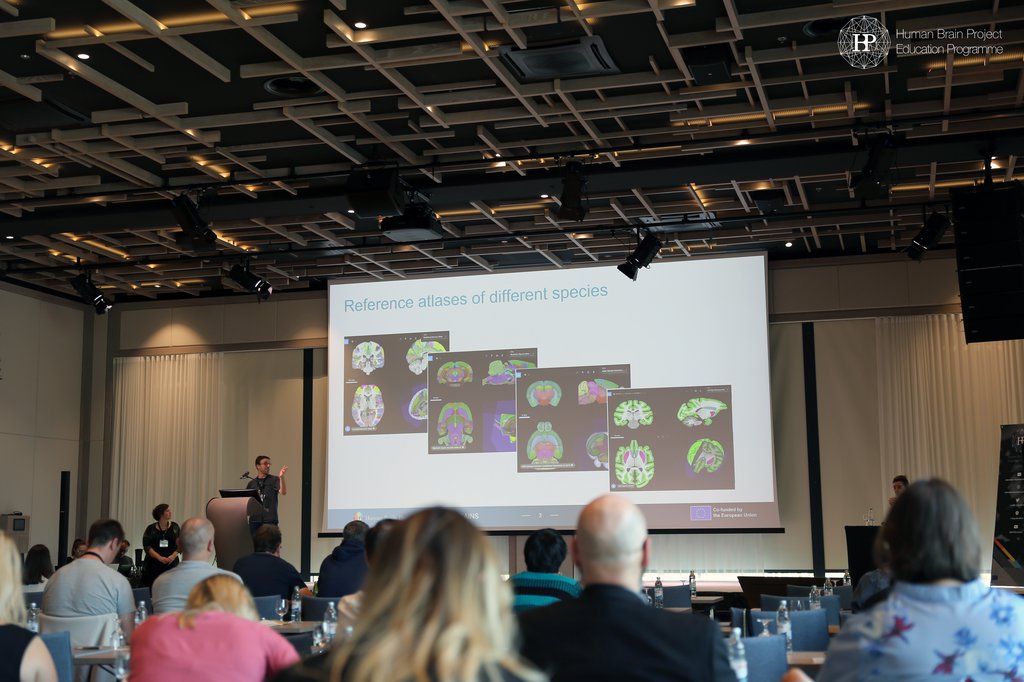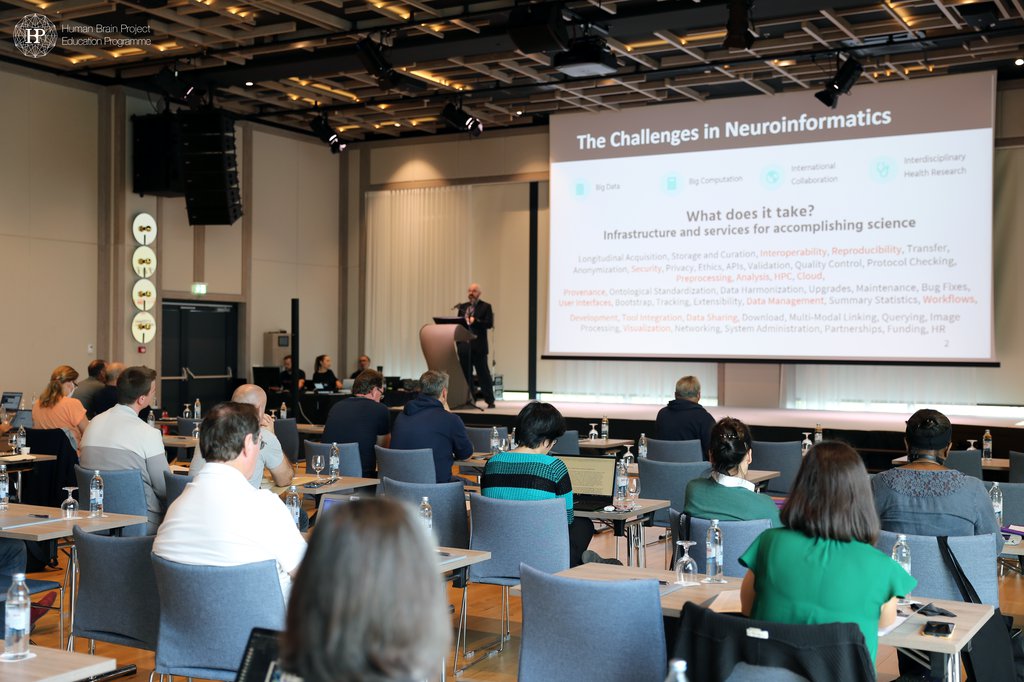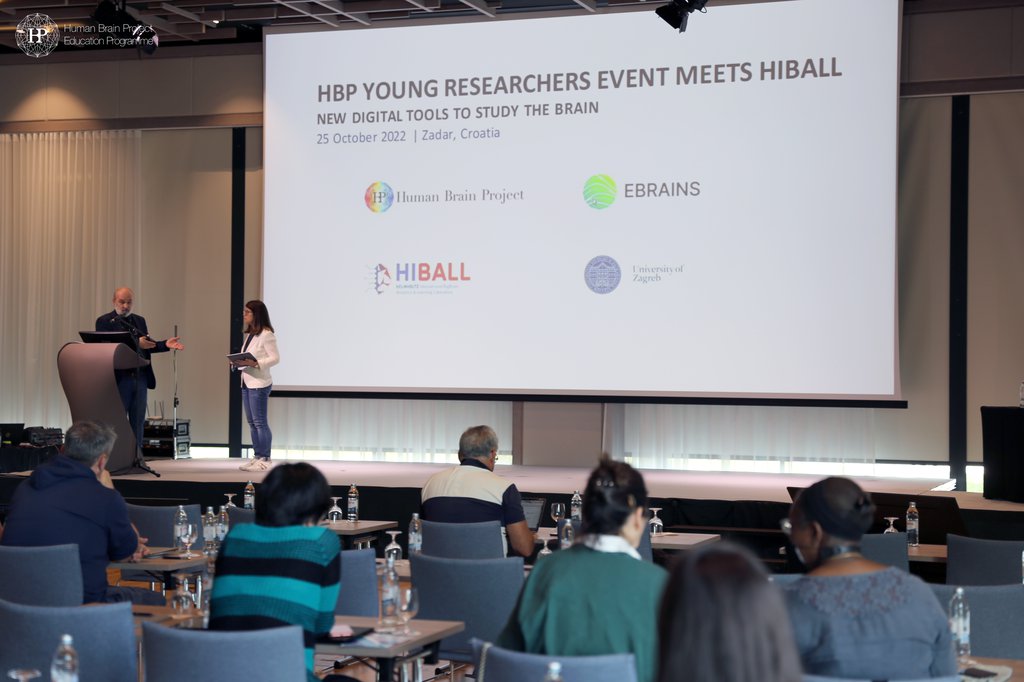Young Researchers Event
Young Researchers Event meets HIBALL: new digital tools to study the brain
25 October 2022 | Zadar, Croatia & online
Download the scientific programme 2.2 MB
Check out the recordings of the lectures of this
Young Researchers Event
About
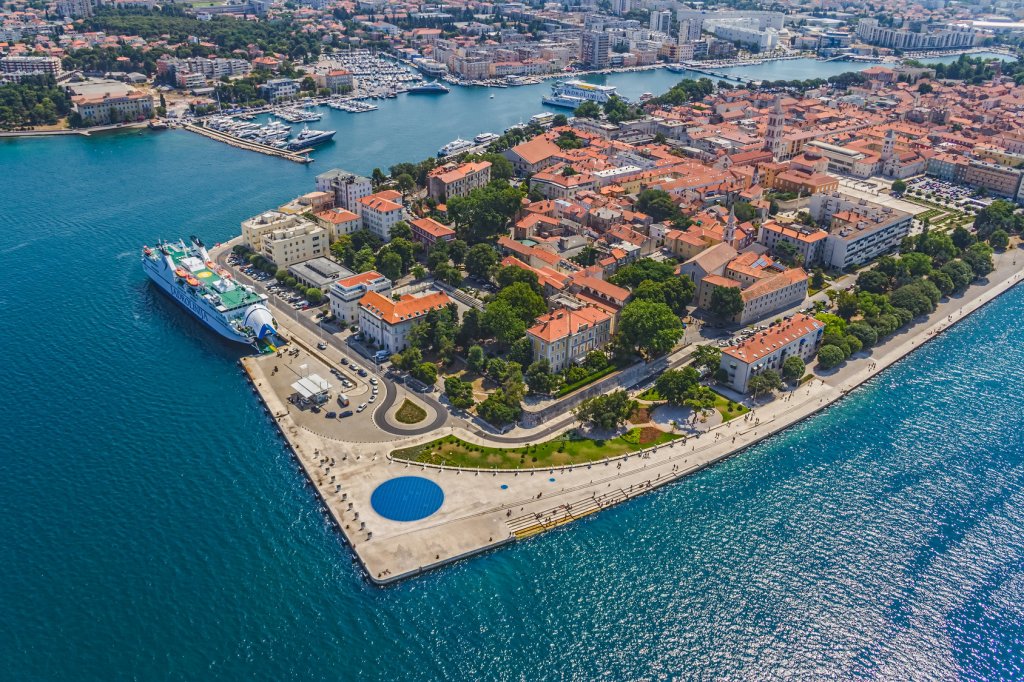 © BestofCroatia
© BestofCroatia
By plane
Zadar has a small international airport which has connections to many major European cities. The airport is a 30 min. drive away from the venue. Alternatively, you can also land in Zagreb, which has a bigger airport, and then take a bus from the Zagreb main bus station to Zadar. This ride will take 3 hours.
By car
Zadar is located on the A1 highway. This highway connects the city with major Croatian cities such as Zagreb and Split and also other European countries.
The speed limit in Croatia is 130 km/h on motorways, 90 km/h on open roads and 50 km/h within cities.
In order to use Croatian motorways, you have to pay toll. At the entrance of the motorway, you will get a ticket and at the exit you will have to pay the toll amount. Toll can be paid in Kuna or Euro, as well as by card.
By bus
You can take a bus from Zagreb to Zadar, which will take 3 hours. Alternatively, you can also take a bus from Split to Zadar, which takes 2 hours. Both routes are run by a number of different bus companies. The largest bus operators are Arriva, Croatia Bus and Cazmatrans. Tickets range from 7 to 16€. All busses depart from the main bus terminal (autobusni kolodvor). This is also where you can buy tickets. Bus tickets can also be bought online on getbybus or Vollo.
The venue is located in Petrčane, which is a 15 minute bus ride away from Zadar. The bus stop is a 30 minute walk away from the venue. Alternatively, you can also take a taxi.
Currently no Covid restrictions are in place in Croatia. We recommend you to check the website of the Croatian authorities before travelling: https://www.koronavirus.hr/e
We encourage you to take a test before arriving in Zadar and wear a face mask in the lecture halls. Keep social distance and follow hygiene recommendations.
The Adriatic coast region has a Mediterranean climate consisting of hot and dry summers. The winters are cool and rainy. The average temperatures in October are between 12°C and 20°C.
There are a number of accommodations available in Petrčane, as well as Zadar.
Accommodations in Petrčane
Accommodations in Zadar
Language
The official language of Croatia is Croatian, which is written using the Latin alphabet. Especially younger Croatians also commonly speak English.
Currency
The currency in Croatia is the Croatian Kuna (HRK). 1 HRK = 0,13€
Money can be exchanged in banks and post offices. Credit cards are widely accepted in most shops and restaurants. Nevertheless, you should make sure to ask the staff beforehand. Croatian Kuna can also be withdrawn from ATMs, which are readily available.
Time
Croatian is in the Central European Summer Time Zone at the time of the event. This time zone is also referred to as UTC+2. On the 25th of October, Croatia will switch to Central European Time (UTC+1).
Electricity
The standard voltage in Croatia is 230 V. The standard frequency is 50 Hz. Most European countries use the same voltage and frequency.
Please note that the information provided on this site has been obtained from several different sources and therefore the organisers cannot accept any responsibility for errors therein.
The human brain is a multi-level and highly complex system that produces, processes and transmits information in an incomparable manner. The Human Brain Project (HBP) unites researchers and scientists to decode the mechanisms underlying this unique system by investigating the human brain and its diseases with the help of highly advanced ICT tools. As such, the HBP is developing EBRAINS, the new European digital research infrastructure, as a lasting contribution to the global science community, an open source tool that allows scientists and technology experts to seamlessly collaborate, thereby accelerating advancements in the fields of neuroscience, computing and brain-related medicine.
The Helmholtz International BigBrain Analytics and Learning Laboratory (HIBALL) is an HBP Partnering Project that aims to transform the well-known BigBrain model to its next level by reinforcing utilization and co-development of the latest AI and high-performance computing (HPC) technologies for building highly detailed 3D brain models.
HBP and EBRAINS together with the University of Zagreb, School of Medicine and HIBALL invited the entire scientific community, in particular early career researchers, to join the Young Researchers Event (YRE), that took place on 25th October in Zadar, Croatia and online. During this one-day free hybrid event, participants learned more about topics like big data analytics, human brain atlasing and computational neuroscience in interactive plenaries and hands-on workshops. The programme also offered networking opportunities for participants to exchange with peers as well as renowned experts.
This event took place in conjunction with the 6th BigBrain Workshop - From microstructure to functional connectomics.
Picture Gallery
Preliminary Programme & Speakers
This programme is subject to change. Times displayed are in CEST/GMT+2/UTC+2.
|
09:00 – 10:00 |
Registration & Welcome Coffee |
|
10:00 – 10:10 |
Welcome notes |
| 10:10 – 11:30 | Plenary session I (Chair: Katrin Amunts | Forschungszentrum Jülich/Heinrich-Heine University Düsseldorf) |
|
10:10 – 10:30 |
Introduction to the Human Brain Project and EBRAINS Katrin Amunts (Forschungszentrum Jülich/Heinrich-Heine University Düsseldorf) |
|
10:30 – 11:00 |
BigBrain data processing with CBRAIN and DataLad Bryan Caron (McGill University) |
|
11:00 – 11:30 |
Postnatal development of the human brain Miloš Judaš (School of Medicine University of Zagreb) |
|
11:30 – 12:00 |
Coffee Break |
| 12:00 – 13:30 | Plenary Session II (Chair: Nicola Palomero-Gallagher | Forschungszentrum Jülich) |
|
12:00 – 12:20 |
Introduction to EBRAINS RI: Data |
| 12:20 – 12:40 |
The multilevel human brain atlas in EBRAINS |
| 12:40 – 13:00 |
Can we use cortical folding patterns as a proxy of architectural variability? |
|
13:00 – 13:30 |
HIBALL and related international initiatives Alan Evans (McGill University) |
|
13:30 – 14:30 |
Lunch Break |
|
14:30 – 15:30 |
Hands-on sessions iteration I (find further info on hands-on sessions below) |
| 15:30 – 16:30 |
Hands-on session iteration II |
|
16:30 – 17:00 |
Coffee Break |
|
17:00 – 17:30 |
Early career researchers session Frequency-dependent spatial distribution of features for Major Depressive Disorder (MDD) Julich-Brain GapMaps parcellation based on structural connectivity using Constellation Building Goal-Driven Models of the Sensorimotor System to Understand Human Dexerity |
|
17:30 – 18:00 |
What are you missing in EBRAINS? Feedback and Q&A |
|
18:00 |
End of the event |
Title: BigBrain data processing with CBRAIN and DataLad
Abstract:
This tutorial will provide an introduction to two tools that can be used to process and manage BigBrain-related data: CBRAIN and DataLad.
CBRAIN is a web portal that provides seamless access to high-performance computing clusters, and is a component of the NeuroHub ecosystem of neuroinformatics tools. DataLad is a data integration tool to keep track of distributed datasets. The tutorial will cover the main functionalities of CBRAIN and DataLad, illustrate them on BigBrain data, and demonstrate their interaction.
Tutors (in-person):
Bryan Caron (McGill University, Canada)
Shahbaz Memon (Forschungszentrum Jülich, Germany)
Morris Riedel (Forschungszentrum Jülich, Germany)
Tutors (remote):
Pierre Rioux (McGill University, Canada)
Serge Boroday (McGill University, Canada)
Natacha Beck (McGill University, Canada)
Expected learning outcomes:
In this tutorial participants will learn to use the following infrastructure tools and services for analyzing data in HIBALL:
- Part 1: DataLad and Boutiques, to access and process BigBrain data through uniform command-line interfaces, including:
- Finding BigBrain datasets in DataLad
- Installing and downloading BigBrain datasets
- Processing BigBrain datasets with Boutiques
- Uploading derived data to DataLad
- Part 2: CBRAIN to process BigBrain data on HPC clusters through a web portal, including:
- Finding BigBrain datasets in CBRAIN
- Processing BigBrain datasets in CBRAIN
- Exploring and working with the processing results
- Downloading and sharing the results
Max. Number of participants: no limit
Preparations & Equipment:
- Laptop (Windows, Mac or Linux)
- NeuroHub or CBRAIN account
- Participants who do not already have a NeuroHub account can obtain one by registering here and selecting ‘Request Account’: https://portal.neurohub.ca/
Title: Using EBRAINS atlas services to explore and analyse the human brain
Abstract:
EBRAINS offers a multilevel atlas of the human brain, which captures different principles of brain organization inside a common framework. It integrates maps and reference brain templates at the microscopic and macroscopic scales, and links them with multimodal data features describing microstructure, connectivity and function. Features are linked semantically to brain regions, or spatially by registration to 3-D reference templates. The multilevel atlas framework can be used interactively with our interactive atlas viewer "siibra-explorer", and as well as through a Python client (siibra-python) which allows to use the atlas for advanced analysis and computational workflows. This hands-on session will present the BigBrain dataset as a microscopic reference brain template, and show how it can be navigated in 3D together with different brain parcellations and other reference spaces. We will use the atlas to discover linked multimodal data features, and show how to use it for reproducible analyses using the Python client.
Tutors:
Timo Dickscheid (Forschungszentrum Jülich)
Sebastian Bludau (Forschungszentrum Jülich)
Expected learning outcome:
The goal of the hands-on session is to provide basic skills to view and download different brain maps along with their metadata, and to access data features linked from different modalities by their anatomical locations in the brain. Participants will learn the basic concepts using the interactive online viewer „siibra-explorer“, and see how these can be translated into exemplary programmatic workflows using siibra-python and Jupyter notebooks.
Max. number of participants:
25
Preparations & Equipment:
Each user should register for an EBRAINS account in advance to be able to run all provided interactive scripts. A Notebook/PC with internet connection and an up-to-date web browser (Chrome or Firefox recommended) will be needed.
Title: Introduction to the ENIGMA Toolbox: Surface data visualization and multiscale neural contextualization
Abstract:
Among big data initiatives, the ENIGMA (Enhancing NeuroImaging Genetics through Meta-Analysis) Consortium—a worldwide alliance of over 2,000 scientists diversified into over 50 Working Groups—has yielded some of the largest studies of the healthy and diseased brain. Integration of multisite datasets to assess similarities and differences across brain disorders and to explore brain abnormalities across different biological scales, however, have been limited. In this tutorial, we will introduce the ENIGMA Toolbox, an open-source Python/Matlab ecosystem for (i) accessing 100+ ENIGMA datasets, (ii) visualizing data on brain surfaces, and (iii) contextualizing neuroimaging findings at the microscale (postmortem cytoarchitecture and gene expression) and macroscale (structural and functional connectomes). Our Toolbox tutorial will equip scientists with tools to explore molecular, histological, and network correlates of brain disorders, and perform advanced analytic workflows for multicenter datasets.
Tutor:
Sara Larivière (McGill University, Canada)
Max. Number of participants: no limit
Preparations:
Users should have MATLAB installed and/or python 3.7 (the tutorial will be in both languages at the same time to accommodate the majority of people)

Katrin Amunts did a postdoctoral fellowship at the C. & O. Vogt Institute of Brain Research at Duesseldorf University, Germany. In 1999, she set up a new research unit for Brain Mapping at the Research Center Juelich, Germany. In 2004, she became professor for Structural-Functional Brain Mapping, and in 2008 a full professor at the Department of Psychiatry, Psychotherapy and Psychosomatics at the RWTH Aachen University as well as director of the Institute of Neuroscience and Medicine (INM-1) at the Research Center Juelich. Since 2013, she is a full professor for Brain Research, director of the C. and O. Vogt Institute of Brain Research, Heinrich-Heine University Duesseldorf and director of the Institute of Neuroscience and Medicine (INM-1), Research Center Juelich.
Katrin Amunts is a member of the editorial board of Brain Structure and Function. She is member of the German Ethics Council since 2012, and has been elected as vice chair in 2016. Katrin Amunts is the programme speaker of the programme Decoding the Human Brain of the Helmholtz Association, Germany. She is leading Subproject 2 Human Brain Organization of the European Flagship Project The Human Brain Project (HBP). In 2016, she has been elected as Scientific Research Director and Chair of the Science and Infrastructure Board (SIB) of the HBP. Since 2017 Katrin Amunts is co-speaker of the graduate school Max-Planck School of Cognition and since 2018 she is a member of the International Advisory Council Healthy Brains for Healthy Lives, Canada.
In order to better understand the organizational principles of the human brain, she and her team aim to develop a multi-level and multi-scale brain atlas, and use methods of high-performance computing to generate ultra-high resolution human brain models.

Jan Bjaalie, M.D., Ph.D., is Professor at the Institute of Basic Medical Sciences, University of Oslo, where he leads a team of researchers, data curation scientists, and software developers contributing to the building of the EBRAINS RI, the European distributed research infrastructure for brain and brain-inspired research. He is Infrastructure Director of the EU Human Brain Project, leader of the EBRAINS Data services, special advisor on neuroinformatics for the EBRAINS AISBL, Head of the Norwegian Neuroinformatics Node, and former Head of the Institute of Basic Medical Sciences at the University of Oslo (2009 - 2016). With a strong background in neuroanatomy and neuroscience, he is focused on making scientific research data more accessible and interpretable and on developing advanced brain atlasing tools for brain-wide analysis of multimodal data. In his role as founding Executive Director of the International Neuroinformatics Coordinating Facility (2006 – 2008), he initiated INCF programs on brain atlasing and multi-scale modeling. Professor Bjaalie has been partner and coordinator of several EU projects and has collaborated extensively with leading laboratories in many countries. He is Chief-Editor of Frontiers in Neuroinformatics and has served as member of the Neuroinformatics Committee of the Society for Neuroscience (2004 - 2009) and co-Chair (2018 - 2020) and Chair (2021) of the International Brain Initiative.rate ultra-high resolution human brain models.
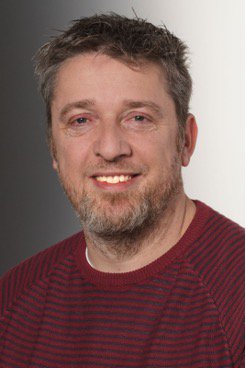
Sebastian Bludau graduated with a diploma as a biologist at the Heinrich-Heine University in Duesseldorf and received a PhD in theoretical medicine from the RWTH Aachen University in 2011, where he studied the cytoarchitecture of the frontal pole of the human brain. Subsequently he became post-doc at the INM-1 (Structural and functional organization of the brain) at the Institute of Neuroscience and Medicine at the research center Juelich. Sebastian Bludau’s current research is mainly about the cytoarchitecture of the human brain, the integration of different imaging modalities into high resolution reference spaces, high-throughput optical microscopy and developing and testing of new prototype software for the analysis of histological images.
 Ariane Bruno is a researcher at the INM-1 (Structural and functional organization of the brain) at the Institute of Neuroscience and Medicine at the research center Juelich and the C. and O. Vogt Institute of Brain Research of the Heinrich-Heine University Duesseldorf. In 2015, she received her M.Sc. degree in Molecular Medicine (Friedrich-Alexander University of Erlangen-Nuernberg). Currently, she is a fourth-year PhD candidate at the Heinrich-Heine University Duesseldorf, working mainly on cytoarchitecture of the human dorsolateral prefrontal cortex to better understand the organizational principle of the prefrontal cortex.
Ariane Bruno is a researcher at the INM-1 (Structural and functional organization of the brain) at the Institute of Neuroscience and Medicine at the research center Juelich and the C. and O. Vogt Institute of Brain Research of the Heinrich-Heine University Duesseldorf. In 2015, she received her M.Sc. degree in Molecular Medicine (Friedrich-Alexander University of Erlangen-Nuernberg). Currently, she is a fourth-year PhD candidate at the Heinrich-Heine University Duesseldorf, working mainly on cytoarchitecture of the human dorsolateral prefrontal cortex to better understand the organizational principle of the prefrontal cortex.

Bryan Caron is leader of the CBRAIN platform and Co-Principal Investigator and Director, Operations and Development of the NeuroHub project, a core facility platform of McGill University’s Healthy Brains, Healthy Lives initiative. Prior to leading CBRAIN and NeuroHub, Bryan was a Research Scientist, Adjunct Professor and Director, Business Operations of the McGill High Performance Computing Centre. Bryan has over 20 years of experience in high performance computing and data intensive science.
Talk: Big data processing and collaborative neuroinformatics with CBRAIN and DataLad
CBRAIN is an open source, web-based, collaborative research software platform providing researchers with the ability to easily collaborate, store and analyze data at scale using pipelines on heterogeneous computing and data resources around the world. DataLad is a data integration tool to keep track of distributed datasets. In this talk the main features and functionalities of CBRAIN and DataLad will be presented. CBRAIN will also be presented in the context of the NeuroHub technology platform of McGill University’s Healthy Brains, Healthy Lives initiative.

Timo Dickscheid is a Professor for Microscopic Image Analysis at Heinrich-Heine University Düsseldorf, and head of the "Big Data Analytics" group at the Institute of Neuroscience and Medicine (INM-1), Forschungszentrum Jülich, Germany. He graduated in Computer Science at the University of Koblenz in 2006, and earned his PhD at the University of Bonn in 2011, where he worked on the 3D reconstruction of buildings from images under the supervision of Prof. Wolfgang Förstner. In 2010, he joined Forschungszentrum Jülich as a post-doc to build high-resolution 3D models of the human brain from microscopic images. After accepting a position as the head of Information Technology at the German Federal Institute of Hydrology in Koblenz in 2012, Dickscheid returned back to Jülich in 2014 to build his own research group. Aiming to build a cellular resolution multimodal model of the human brain, his work addresses high throughput microscopy, biomedical image analysis on HPC systems, and neuroinformatics solutions for handling large image datasets. In the Human Brain Project (HBP), Timo is responsible for the development of a publicly accessible multi-level human brain atlas.
Talk: The multilevel human brain atlas in EBRAINS
EBRAINS offers a multilevel atlas of the human brain, which captures different principles of brain organization inside a common framework. It integrates maps and reference brain templates at the microscopic and macroscopic scales, and links them with multimodal data features describing microstructure, connectivity and function. Features are linked semantically to brain regions, or spatially by registration to 3-D reference templates. The multilevel atlas framework can be used interactively with the interactive atlas viewer "siibra-explorer", and as well as through a Python client (siibra-python) which allows to use the atlas for scripting, advanced analysis and computational workflows. The atlas contents are modelled as FAIR datasets in the EBRAINS Knowledge Graph, following the openMINDS metadata framework. This talk will introduce the atlas concept, give an overview of the siibra toolsuite, and provide a small introduction to the openMINDS atlas definitions that are in accordance with the new Atlas Ontology Model "AtOMs".

Professor Alan Evans did his PhD in biophysics at Leeds University in the UK, studying 3D protein folding. He spent 5-year at Atomic Energy of Canada as a PET physicist. In 1984, he moved to the Montreal Neurological Institute at McGill where his research interests include multi-modal brain imaging with PET or MRI, structural network modeling and large-scale brain databasing (www.mcin.ca).
He has published 673 peer-reviewed papers (ISI h-index = 130 ; Google h-index =197) and has been recognized as a Highly Cited Scientist (top 1%) for Neuroscience and Behaviour (160,468 citations, Google Scholar) from 2014-2020. He has held numerous leadership roles, notably Director of the McConnell Brain Imaging Centre (BIC) during the 1990’s. He is a founding member of the International Consortium for Brain Mapping (ICBM). He was one of the founders of the Organization for Human Brain Mapping (OHBM), serving in numerous positions on the OHBM Council since 1995. He chaired the 4th International Conference on Human Brain Mapping in 1998. He was appointed OHBM Chair in 2017.
He has received numerous awards in recognition of his work. In 2003 he received a CIHR Senior Scientist Award. In 2014, he was awarded the national Margolese Prize for Research into Human Brain Disorders and the Vezina Prize for Québec Neuroradiology. In 2015, he was inducted as a Fellow of the Royal Society of Canada. In 2016, he was awarded the Prix du Québec (Wilder Penfield) and ranked #6 by Science magazine in its list of most influential brain scientists of the modern era. In 2017, he was elected as Chair of Organization for Human Brain Mapping, inducted as a Fellow of the Canadian Academy of Health Sciences and awarded the Senate of Canada 150 Medal. In 2018, he was awarded the Heinz Lehmann Prize for services to Neuropsychopharmacology, the Victor Dahdaleh Chair in Neurosciences and the Club de Recherches Clinique du Québec Mentorship Prize. In 2019, he was awarded the OHBM Glass Brain Award, its highest honour for career contributions to the field of brain mapping. In 2020, he received the Izaak Walton Killam Prize for lifetime achievement.
He is currently Co-Director of the Ludmer Centre for Neuroinformatics and Mental Health, Scientific Director of McGill’s $84M CFREF project “Healthy Brains, Healthy Lives” and Scientific Director of the Canadian Open Neuroscience Platform. This platform is built upon an international grid-processing network (CBRAIN) developed in Evans’ lab and has been extended to include international brain networks, notably the Canada-China-Cuba Axis and the Global Brain Consortium, both co-chaired by Evans. He headed the Data Coordinating Center for the NIH-funded multi-center MRI Study of Normal Pediatric Development. Finally, he was a Founder of Biospective Inc., (www.biospective.com), a CRO that offers 3D image analysis for clinical/pre-clinical pharmaceutical studies.
Talk: HIBALL and related international initiatives
HIBALL is a joint program between McGill U. in Canada and FZ Jülich in Germany to explore the role of AI and big data in neuroscience. The Canadian side is funded by Healthy Brains, Healthy Lives (HBHL), a large multi-investigator program at McGill that explores big data neuroscience applications in neurodegeneration, neuroplasticity and neuropsychiatry. The German side is funded by the Helmholtz Association. HIBALL is built upon advanced IT infrastructures in Canada (LORIS, CBRAIN) and Europe (EBRAINS) that also support national and international Open data-sharing networks, notably the Canadian Open Neuroscience Platform (CONP) and the Global Brain Consortium (GBC). This talk will describe the current status of these and related initiatives.
 Eda Jovičić is a researcher at the Faculty of Electrical Engineering and Computing, University of Zagreb where she also received the M.Sc. degree in electronic and computer engineering. Her current research interests include signal processing, biomedical engineering and machine learning with applications.
Eda Jovičić is a researcher at the Faculty of Electrical Engineering and Computing, University of Zagreb where she also received the M.Sc. degree in electronic and computer engineering. Her current research interests include signal processing, biomedical engineering and machine learning with applications.
Talk: Frequency-dependent spatial distribution of features for Major Depressive Disorder (MDD)
Recently, problems related to depression have been recognized as one of the leading issues in healthcare. Developing a decision support system, we could improve the diagnostics of affective disorders. Key element to doing so is finding features related to depression. Frequency-dependent features are extracted from electroencephalography (EEG) signals. By processing and analyzing spatial distribution of features and using machine learning methods, we distinguish the difference between healthy and depressed people.
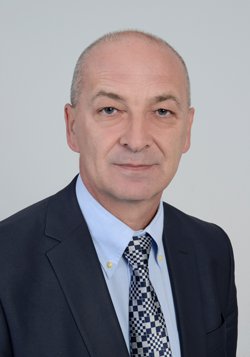
Miloš Judaš was born in 1961 (Petrinja, Croatia). He is currently employed at the University of Zagreb School of Medicine as full professor of neuroscience & anatomy (2012-present), director of the Croatian Institute for Brain Research (2015-present), and director of the national Center of Excellence in Basic, Clinical & Translational Neuroscience (2015-present). He also served as Vice-Rector for Science & International Cooperation at the University of Zagreb (2014-2022). Professor Judaš significantly contributed to the development of neuroscience in Croatia, through his involvement in the foundation of the Croatian Institute for Brain Research, the Croatian Society for Neuroscience, the first graduate course in neuroscience (for medical students), and the first Ph.D Study Program in Neuroscience.
Research interest: Human neuroanatomy and human developmental neurobiology; developmental and evolutionary neurobiology of cognition and language; history of neuroscience.
Contact:
Miloš Judaš, M.D., D.Sc.,
Professor of Neuroscience & Anatomy,
Croatian Institute for Brain Research (director),
University of Zagreb School of Medicine,
Šalata 12, 10000 Zagreb, Croatia,
E-mail: mjudas@hiim.hr

Dr Jean-François Mangin is the director of Baobab, the methodological research unit of Neurospin, the ultra-high field neuroimaging center of the CEA. He is also the funding director of the CATI platform dedicated to multicenter neuroimaging (http://cati-neuroimaging.com), which has supported over 40 clinical studies across France and Europe. Relying on a growing network of about 100 harmonised imaging facilities, the platform monitors acquisitions and performs centralised image analysis from a wide portfolio. He has been co-leader of the Strategic Human Brain Data sub-project of the Human Brain Project.
His primary scientific interest for 30 years has been the study of the variability of the folding pattern of the human cerebral cortex. His team has developed several generations of dedicated systems, which have been distributed to the community through the BrainVISA platform (http://brainvisa.info/). He was awarded in 2020 one of the Artificial Intelligence Chairs from the French national AI program.
Talk: Can we use cortical folding patterns as a proxy of architectural variability?
The gross cortical folding morphology is often used for aligning brains. In the context of the HBP atlas, for instance, the Big Brain space has been aligned with the ICBM space using transformations explicitly forcing the alignment of a set of stable sulci. But this strategy is often questioned, as the links between folding patterns and the architecture of the cortex (architectonics and connectivity) is far from clear. This presentation will describe a research program that aims to test the extent to which inter-individual variability of the folding pattern is a proxy for the variability of the embedding of the cortical architecture. This program includes simulations of the cortical folding process and modeling of the variability of the folding pattern using manifold learning (with conventional or deep strategies). MRI of highly premature infants and great apes (chimps, gorillas and orangutans) are used to tackle the emergence of specific local patterns during development and evolution. The postmortem histological datasets aggregated to create the Jülich architectonic brain are used to test the links between folding patterns and specific architectonic topographies.
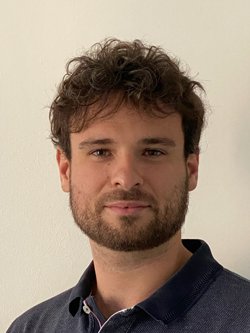
I have worked as an engineer since 2020 in Baobab, the methodological team of Neurospin, the ultra-high field neuroimaging center of the CEA. As part of the Human Brain Project, I develop, maintain and run Constellation, a BrainVisa toolbox that produces structural connectivity-based cortical parcellations. I work with various reference atlases, namely Desikan and Julich-Brain, both by sub-parcellating them and projecting them onto individuals using diffusion tractographies from large datasets. My personal goal is to study the variability of structural parcellations across individuals and integrate it with other modalities.
Talk: Julich-Brain GapMaps parcellation based on structural connectivity using Constellation
The release of the Julich-Brain[1] has broadened the horizons of brain mapping, especially in the field of cytoarchitectonics. This meticulous work of 25 years proposes a 3D probabilistic atlas of areas distributed across the cortex and subcortical nuclei. Among these areas some have a special status: because the cytoarchitectonic mapping of these areas in the postmortem histological brains is still in progress, they were regrouped under the labelling GapMaps, to provide a whole-brain consistent parcellation. Thus, GapMaps study is a work-in-progress in the spirit of the Julich-Brain as an atlas in continuous evolution.
Full abstract
482.8 KB

Sara Larivière is a CIHR doctoral fellow, fifth-year PhD candidate in the Integrated Program in Neuroscience at Mcgill in Montreal, and a researcher in the Multimodal Imaging and Connectome Analysis (MICA) Laboratory at the Montreal Neurological Institute (MNI) supervised by Dr Boris Bernhardt. Her research focuses on the effects of epilepsy surgery on the brain as well as leveraging big data to study multiscale network alterations in the common epilepsies.

Nicola Palomero-Gallagher, PhD, PD, graduated 1990 from the Sciences Faculty of the Universidad Autónoma of Madrid, Spain. She was a PhD student at the C. & O. Vogt-Brain Research Institute of the Heinrich-Heine University Düsseldorf, Germany, between 1992 and 1999, and received the PhD in 1999. Since 2000 she works at the Institute of Neuroscience and Medicine (INM-1), Research Center Jülich, Germany, where she is a Senior Researcher and Leader of the research group “Rezeptoren”. She is a senior editor of Brain Structure and Function. Her research is centered on the structural (cyto- and fiber-architecture) and molecular (receptor-architecture) organization of the human, non-human primate and rodent cerebral cortex, with particular focus on the cingulate cortex. Her major goal is to understand the cyto- and receptor-architectonic basis of cortical segregation and interareal interactions, with emphasis on their relationship with function.
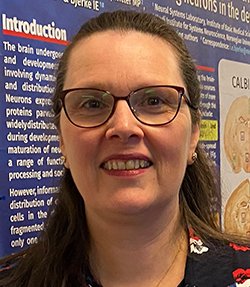 Dr. Maja A. Puchades (University of Oslo) is a senior researcher working with digital atlasing tools with a research interest is in neurodegenerative related diseases (Alzheimer, Parkinson and Huntington). In the Human brain project (HBP) and EBRAINS infrastructure, Puchades is deputy leader for the Brain Atlas Service and related tools and participate to the EBRAINS Curation team. She will present an overview of EBRAINS tools for analyses of Rodent brain images. A pipeline consisting of several tools allow users to register their images to a reference atlas and perform quantitative analysis in atlas context. Both standalone and online versions of the tools are now available through the EBRAINS infrastructure.
Dr. Maja A. Puchades (University of Oslo) is a senior researcher working with digital atlasing tools with a research interest is in neurodegenerative related diseases (Alzheimer, Parkinson and Huntington). In the Human brain project (HBP) and EBRAINS infrastructure, Puchades is deputy leader for the Brain Atlas Service and related tools and participate to the EBRAINS Curation team. She will present an overview of EBRAINS tools for analyses of Rodent brain images. A pipeline consisting of several tools allow users to register their images to a reference atlas and perform quantitative analysis in atlas context. Both standalone and online versions of the tools are now available through the EBRAINS infrastructure.

Tonio Weidler is a third-year PhD candidate at Maastricht University in the Department of Cognitive Neuroscience, working at the intersection of cognitive computational neuroscience and artificial intelligence. Within the Human Brain Project, he builds deep neural network models of the human sensorimotor system to better understand the neurocomputations underlying human dexterity. To this end, he combines reinforcement learning, robotics and neuroscience to develop goal-driven methods. His goal is to bring together functional capacity and biological plausibility in modeling to bridge the aims of cognitive neuroscience and artificial intelligence, and to thereby foster their scientific cross-fertilization.
Talk: Building Goal-Driven Models of the Sensorimotor System to Understand Human Dexerity
In goal-driven modeling, the construction of neural models begins at the macroscale level. Brain regions and the pathways linking them build the foundation of an architecture. At the microscale level, only the mathematical framework constituting the underlying network mechanism constrains the model. The interneuronal connectivity patterns, however, emerge from an optimization on an ecologically valid task constituting the goal. It is then postulated that the learned connectivity approximates the brain’s neurocomputations given sufficient external constraints. The pivotal advantage of this approach lies in its potential to autonomously learn neural connectivity patterns, thereby circumventing the limitations of e.g., hand-engineering or neural fitting. As such, goal-driven deep learning constitutes a new complement to classical methods in computational neuroscience and has already proven fruitful for modeling perception. Convolutional neural networks have, for instance, been shown to capture hierarchical processing along the ventral visual stream particularly well. Whereas goal-driven modeling in the sensory domain is becoming increasingly common, its application to sensorimotor control is hampered by the complexity of the reinforcement learning methods required to train models comprising the full sensation-action loop. To clear this hurdle, we introduce AngoraPy, a modeling library providing neuroscientists with comprehensive, coherent tools to train and validate complex recurrent convolutional neural network models of sensorimotor systems at any scale. We exemplify this framework in the context of human dexterity. To this end, a large-scale model of the human frontoparietal network, developed under inspiration from data recorded in the EBRAINS MultiLevel Human Brain Atlas, was trained to manipulate a cube by actuating an anthropomorphic robotic hand. The strategies the model adopted under biological constraints are qualitatively human-like. However, whether the neurocomputations employed by the network resemble human information processing remains to be validated through an analysis of the precise representations, transformations and dynamics exhibited by the network.
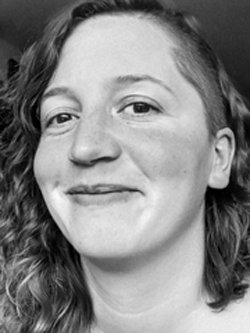
Lyuba Zehl studied biology (BSc; topic: insect locomotion; supervisor: Proj. A. Büschges) and neuroscience (MSc; topic: whale brain anatomy; supervisor: Prof. W. Walkowiak) at the University of Cologne. In her doctoral studies at the RWTH Aachen University she studied systems neuroscience and (meta)data management at the Institute for Neuroscience & Medicine (INM-6) of the Jülich Research Centre (supervisor: Prof. S. Grün). As part of her thesis, she examined the spatio-temporal organisation of neural signals in the monkey motor cortex and refined the (meta)data management processes needed to collaborate on such complex neuroscience experiments. In 2017, she started as postdoctoral researcher in the Big Data Analytics Group of Prof. T. Dickscheid at the INM-1 of the Jülich Research Centre, working for the EBRAINS Data and Knowledge service. She is the product owner of the open Metadata Initiative for Neuroscience Data Structures (openMINDS) and, since 2020, co-leads the EBRAINS curation team.
Talk: The multilevel human brain atlas in EBRAINS
EBRAINS offers a multilevel atlas of the human brain, which captures different principles of brain organization inside a common framework. It integrates maps and reference brain templates at the microscopic and macroscopic scales, and links them with multimodal data features describing microstructure, connectivity and function. Features are linked semantically to brain regions, or spatially by registration to 3-D reference templates. The multilevel atlas framework can be used interactively with the interactive atlas viewer "siibra-explorer", and as well as through a Python client (siibra-python) which allows to use the atlas for scripting, advanced analysis and computational workflows. The atlas contents are modelled as FAIR datasets in the EBRAINS Knowledge Graph, following the openMINDS metadata framework. This talk will introduce the atlas concept, give an overview of the siibra toolsuite, and provide a small introduction to the openMINDS atlas definitions that are in accordance with the new Atlas Ontology Model "AtOMs".
Scientific Chair
Katrin Amunts | Forschungszentrum Jülich/Heinrich-Heine-Universität Düsseldorf (Scientific Research Director HBP)
Programme
Committee
Katrin Amunts | Forschungszentrum Jülich/Heinrich-Heine-Universität Düsseldorf (Scientific Research Director HBP)
Caroline Ernoult | EBRAINS AISBL
Maja A. Puchades | University of Oslo
Paule-J Toussaint | McGill University/HIBALL
Susanne Wenzel | Forschungszentrum Jülich/HIBALL
Goran Sedmak | School of Medicine University of Zagreb
Andrija Štajduhar | School of Medicine University of Zagreb
Local Hosts
Goran Sedmak | School of Medicine, University of Zagreb
Andrija Štajduhar | School of Medicine, University of Zagreb
Organised by

In Collaboration with

Contact
Venue
Fortis Club
Falkensteiner Resort Punta Skala
23231 Petrčane
Croatia

